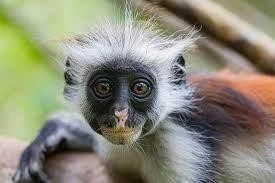GS Paper 1
Raja Ravi Varma
Early Life and Background:
- Raja Ravi Varma was born into an aristocratic family in Kerala in 1848.
- His upbringing in Kerala during the era of British colonial rule influenced his artistic journey.
Artistic Style and Contribution:
- He is widely hailed as the “father of Modern Painting” in India.
- Varma gained renown for his distinctive style, which combined European realism with traditional Indian themes, particularly Hindu gods and goddesses.

Innovations in Technique:
- Varma was the first Indian artist to utilize oil paints, which were introduced to India by the British.
- Additionally, he pioneered the use of lithographic prints, democratizing access to art by making it more widely available to the public.
Notable Works:
- Among his most famous paintings are “Lady in the Moonlight,” “Stolen Interview,” “Shakuntala,” and “Damayanti,” each showcasing his mastery of storytelling and visual artistry.
Recognition and Awards:
- He received patronage from numerous other rulers, including the Maharaja of Mysore and Maharaja of Udaipur.
- Varma’s talent garnered international acclaim, notably winning the first prize at the Vienna Exhibition in 1873 for his painting “Hamsa Damayanti,” based on a story from the Mahabharata.
- He was also awarded three gold medals at the World’s Columbian Exposition in Chicago in 1893.
- In 1904, Viceroy Lord Curzon, on behalf of the King Emperor, bestowed upon Raja Ravi Varma the Kaisar-i-Hind Gold Medal.
-
- At this time, his name was mentioned as “Raja Ravi Varma” for the first time.
-
Types of Deficits: Fiscal, Revenue, Primary, Trade, Budgetary and Monetised Deficits | UPSC
GS Paper 2
Middle Powers
News: The proliferation of “middle powers” will provide the driving force in shaping the 21st-century geopolitical order.
Great Powers: Are countries with a permanent seat on the United Nations Security Council which exert economic, political and military dominance over the world.
- Example: China, France, Russia, the United Kingdom and the United States.
Middle Powers: Are those countries that rank below these great powers but still exert influence over global politics. Examples:
- Global North Countries: Australia, Canada and South Korea
- Global South Nations: Argentina, Brazil and Indonesia.
Antarctic Treaty
News: The Ministry of Earth Sciences (MoES), Government of India will host the 46th Antarctic Treaty Consultative Meeting (ATCM 46) in Kochi, Kerala.
Signing and Entry into Force: The Antarctic Treaty was signed in 1959 and became enforceable in 1961.
Geographical Coverage: The treaty governs activities in the region situated south of the 60°S latitude.
Membership: The treaty has 56 member parties, including India, which joined in 1983.
- Consultative Status: Among the members, 29, including India, hold “consultative” status, entitling them to voting rights within the treaty framework.
Legislation and Commitment:
- Indian Antarctic Act: India reinforced its commitment to the Antarctic Treaty by enacting the Indian Antarctic Act in 2022.
Objectives and Goals:
- Demilitarization and Peaceful Use: The key objectives of the treaty are to demilitarize Antarctica and ensure its peaceful use, including prohibiting nuclear tests and radioactive waste disposal.
- Scientific Cooperation: Another goal is to foster international scientific collaboration in Antarctica, promoting research and knowledge-sharing initiatives.
- Territorial Sovereignty Neutrality: The treaty aims to neutralize territorial sovereignty disputes by restricting new territorial claims or the expansion of existing ones, fostering cooperation over territorial matters.
Headquarters Location: Buenos Aires, Argentina.
GS Paper 3
Hangor Class Submarine
News: The inaugural Hangor class submarine constructed by China for Pakistan was recently launched from a shipyard in Wuhan.
Overview: The Hangor class submarine is a diesel-electric attack submarine designed for naval operations.
- “Diesel-electric” refers to the mode of propulsion.
- Diesel engines power the submarine when surfaced or snorkelling (as they need air to operate), while a battery, charged by the diesel engine, allows the vessel to operate while submerged.
Features:
- The Hangor-class is an export variant of the Chinese Type 039A Yuan class.
- It is named after the now decommissioned PNS Hangor, which famously sank Indian frigate INS Khukri during the 1971 war.
- The Hangor class submarines are equipped with Air Independent Propulsion (AIP) technology.
Air Independent Propulsion (AIP):
- This technology enables the submarines to remain submerged for extended periods without the need for frequent surfacing, enhancing their stealth capabilities and endurance underwater.
-
-
- As compared to AIP, conventional diesel-electric submarines need to surface to recharge their batteries after a few days (2-5, depending on the battery used.
- This makes them detectable to enemy radar and exhaust fumes sensors.
- Installation on INS Kalvari: AIP technology is also scheduled to be installed on the first Scorpene class submarine, INS Kalvari, in 2024 which will significantly enhance its operational capabilities.
-
-
Comparison Between Kalvari and Hangor Class:
- Size and Displacement: This class of submarine surpasses the Indian Navy’s Kalvari class in size, boasting a displacement of 2,800 tons compared to the Kalvari’s 1,775 tons.
- Armament of Submarines: Both the Hangor class and the Kalvari class submarines are armed with torpedoes and anti-ship missiles.
-
-
- However, the Kalvari class may have more advanced and proven armament systems.
-
-
- Maneuverability: The larger size of the Hangor class submarines may potentially affect their maneuverability, particularly in littoral waters, compared to the smaller Kalvari class submarines.
-
-
- Kalavari class is much more manoeuvrable.
-
-
- Vertical Launch Systems: Both submarines do not have vertical launch systems (like the ones in India’s nuclear Arihant class), which would allow it to carry bigger cruise missiles like the Brahmos-NG.
Inheritance Tax: Meaning, Need, Significance and Challenges | UPSC
Kutch Ajrakh
News: It has been recently awarded the Geographical Indication.
Etymology: The name “Ajrakh” derives from the word ‘Azrak,’ which means indigo, reflecting the dye used to achieve its distinctive bluish hue.

History: Ajrakh printing, a craft characterized by hand-block printing on treated cotton cloth, has a rich history spanning over 400 years. It was introduced to the region by Sind Muslims.
Regions of Practice:
- Ajrakh printing is predominantly practiced in the Sindh, Barmer, and Kutch regions of Gujarat, India.
- Ajrakhpur, located in Gujarat, serves as the epicenter of Ajrakh work in the region.
Production Process:
- Technique: Artisans employ hand-block printing techniques to create intricate designs on cotton fabric.
- Color Treatment: Textiles undergo treatment with vegetable and mineral-based colors, adding vibrancy to the prints.
Color Symbolism: Ajrakh prints traditionally incorporate three primary colors:
- Blue representing the sky,
- Red symbolizing the land and fire, and
- White denoting the stars.
Cultural Significance:
- Ajrakh printed cloth serves as practical attire for nomadic pastoralist and agricultural communities like the Rabaris, Maldharis, and Ahirs.
- It is commonly fashioned into turbans, lungis, and stoles, meeting both cultural and functional needs.
Navratna Status
News: Indian Renewable Energy Development Agency (IREDA) was granted ‘Navratna’ status by the Department of Public Enterprises.
Introduction of Navratna Scheme: The Navratna scheme was introduced by the government in 1997 to streamline the management and performance of select PSUs.
Classification System: The government categorizes Public Sector Undertakings (PSUs) into three distinct categories: Maharatna, Navratna, and Miniratna.
Criteria for Navratna Status:
- Qualification Standards: To qualify for Navratna status, a PSU must meet specific criteria outlined by the government.
- Performance Indicators: PSUs seeking Navratna status should be Miniratna-I, Schedule ‘A’ companies, and demonstrate consistent high performance.
-
- They must have an ‘excellent’ or ‘very good’ MoU rating in three of the last five years, with a composite score of 60 in six performance indicators.
-
Financial Benchmarks: Additionally, a PSU must maintain significant financial benchmarks, such as:
-
-
- Reporting a net profit of more than Rs 5,000 crore for three consecutive years,
- Sustaining an average annual turnover of Rs 25,000 crore for three years, or
- Having an annual average net worth exceeding Rs 15,000 crore for three years.
-
Benefits of Navratna Status:
- Financial Autonomy: Navratna status grants PSUs substantial financial autonomy, empowering them to make strategic investment decisions independently.
- Investment Flexibility: PSUs with Navratna status can invest up to ₹1,000 crore without requiring approval from the central government.
-
-
- Furthermore, they are permitted to allocate up to 15% of their net worth on a single project, enhancing their flexibility and agility in investment strategies.
-
-
Indian Renewable Energy Development Agency (IREDA):
- Establishment and Oversight: Established in 1987, IREDA operates as a non-banking financial institution under the administrative control of the Ministry of New and Renewable Energy.
- Mission and Activities:
-
-
- Promotion of Renewable Energy: IREDA promotes, develops, and extends financial assistance for the establishment of projects related to new and renewable sources of energy, as well as energy efficiency initiatives.
- Leadership in Green Financing: IREDA holds the distinction of being the single largest “Green Financier” in India, playing a pivotal role in facilitating the financing of sustainable energy projects across the nation.
- Revenue Generation: IREDA generates its revenue through interest and principal repayments from the projects it finances.
- Additionally, it raises funds from the market and through borrowings to sustain its operations and support its initiatives in the renewable energy sector.
-
-
IS4OM
News: The Indian Space Situational Assessment Report (ISSAR) for 2023 has been compiled by ISRO System for Safe and Sustainable Space Operations Management (IS4OM).
ISRO’s Initiative: IS4OM, the Indian Space Situational Awareness and Management system is a comprehensive initiative by the Indian Space Research Organisation (ISRO) aimed at safeguarding India’s space assets.
Functions and Operations:
- Space Object Monitoring: IS4OM actively monitors space objects, analyzing their orbits and characteristics to assess collision risks and ensure the safety of Indian space assets.
- International Collaboration: IS4OM collaborates internationally to enhance the safety and security of India’s space assets, fostering global cooperation in space situational awareness.
- Orbital Maneuvering: One of IS4OM’s key functions is to protect Indian space assets by maneuvering their orbits as necessary to mitigate collision risks and ensure operational safety.
Compliance with Guidelines: IS4OM adheres to international guidelines on satellite disposal and other safety protocols to uphold the integrity and sustainability of space activities.
Indian Space Situational Assessment Report (ISSAR) 2023: Reporting Findings:
The Indian Space Situational Assessment Report (ISSAR) for 2023 provides insights into the state of space situational awareness in India.
Object Addition Trends:
- The Report (ISSAR) for 2023 reveals a notable surge in the detection of space objects, with 3143 new objects identified compared to 2533 in 2022.
- This increase emphasizes the critical importance of implementing robust monitoring and management systems like IS4OM to ensure the safety and security of India’s space assets.
Regenerative Blue Economy
News: The International Union for Conservation of Nature (IUCN) has released a report outlining a roadmap for a Regenerative Blue Economy (RBE).
Definition: Regenerative Blue Economy seeks to restore marine ecosystems, promoting low-carbon economic activities and ensuring prosperity for people and the planet.
Key Points of Regenerative Blue Economy:
- Protection and Restoration: One of the fundamental pillars of RBE is the protection and restoration of marine ecosystems and resources, ensuring their long-term health and sustainability.
- Minimal Impact Economic Activities: The RBE emphasizes economic activities that have minimal environmental impact, promoting sustainability and responsible resource management.
- Fair Distribution of Benefits: A core principle of RBE is to ensure fair prosperity, where the benefits of economic activities are shared equitably among present and future generations.
- Public-Private Collaboration: To achieve its goals, RBE encourages collaboration between the public and private sectors, leveraging the strengths of both to implement effective conservation and sustainable development initiatives.
- Empowering Local Communities: RBE recognizes the importance of empowering local communities, involving them in decision-making processes and ensuring that they benefit from economic activities in their regions.
Adsorption
News: Scientists have devised a nano-material-based process to efficiently extract uranium from wastewater, particularly sourced from radioactive-contaminated soil, aiding environmental cleanup efforts.
Definition: Adsorption refers to the adhesion of atoms, ions, or molecules from a gas, liquid, or dissolved solid onto the surface of a material.
Surface Phenomenon: It is regarded as a surface phenomenon wherein a film of the adsorbate forms on the surface of the adsorbent material.
Key Terms:
- Adsorbents and Adsorbate: Materials used for adsorbing gases or dissolved substances are termed adsorbents, while the molecules adsorbed are collectively referred to as the adsorbate.
Mechanism of Adsorption:
- Surface Energy Dependency: Adsorption relies on the surface energy of the adsorbent material.
- Surface Atom Activity: The partially exposed surface atoms of the adsorbent attract adsorbate molecules, facilitating the adsorption process.
Types of Adsorption:
- Adsorption can occur via electrostatic attraction, chemisorption, or physisorption, depending on the nature of the interaction between the adsorbent and adsorbate.
Characteristics of Adsorbents:
- Pore Structure: Adsorbents typically possess small pore diameters to maximize surface area for effective adsorption, typically ranging between 0.25 and 5 mm.
- Thermal Stability and Resistance: Industrial adsorbents are characterized by high thermal stability and resistance to abrasion, ensuring durability and longevity in various applications.
- Surface Properties: Depending on the intended application, adsorbent surfaces may exhibit hydrophobic or hydrophilic properties to optimize adsorption efficiency.
- Variety of Forms: Adsorbents are available in diverse shapes such as rods, pellets, and molded shapes, catering to different industrial requirements.
- Examples of Adsorbents: Common examples of adsorbents include Silica gel, Alumina, Activated carbon or charcoal, Zeolites, and various biomaterials utilized for protein adsorption.
Comparison with Absorption: Adsorption is distinct from absorption, wherein a substance diffuses into a liquid or solid to form a solution.
Applications:
- Certain materials like silica gel can adsorb moisture from the air, making them useful as drying agents.
- Adsorption plays a crucial role in catalysis, where a catalyst increases the rate of a chemical reaction by providing a surface for reactants to adsorb.
- Air purification – activated carbon can adsorb various pollutants and harmful gases from the air.
Red Colobus Monkey
News: The Red colobus, a rare group of imperilled monkeys spread across Africa, are primary indicators of biodiversity decline in the continent’s tropical forests.
World Monkey Family: The world monkey family consists of two major groups- Colobines and Cercopithecine.
- Colobines: Primarily leaf-eaters, including the Red Colobus monkey and langurs from South and Southeast Asia.
- Cercopithecine: Omnivorous, encompassing macaques of South and Southeast Asia, as well as mangabeys, mandrills, drills, and baboons of Africa.
Habitat and Location: Red Colobus Monkeys are native to western, central, and eastern Africa, spanning from Senegal in the west to the Zanzibar Archipelago in the east.

Habitat Types: They are found in humid forests, coastal thickets, and scrub environments.
Distinctive Features:
- Typically adorned with a brown and orange coat, white whiskers, and a black scalp.
- Unlike other monkey species, colobus monkeys lack thumbs, possessing instead a small remnant bump.
- Primarily arboreal creatures, predominantly dwelling in humid forests.
- Mainly herbivores, consuming young leaves, flowers, and unripe fruit. Additionally, known to ingest charcoal or clay to counteract cyanide from leaves.
IUCN Status: Listed as one of the world’s 25 most endangered primates by the IUCN.

